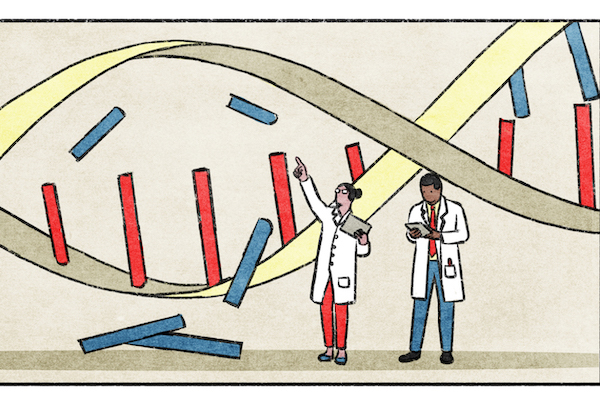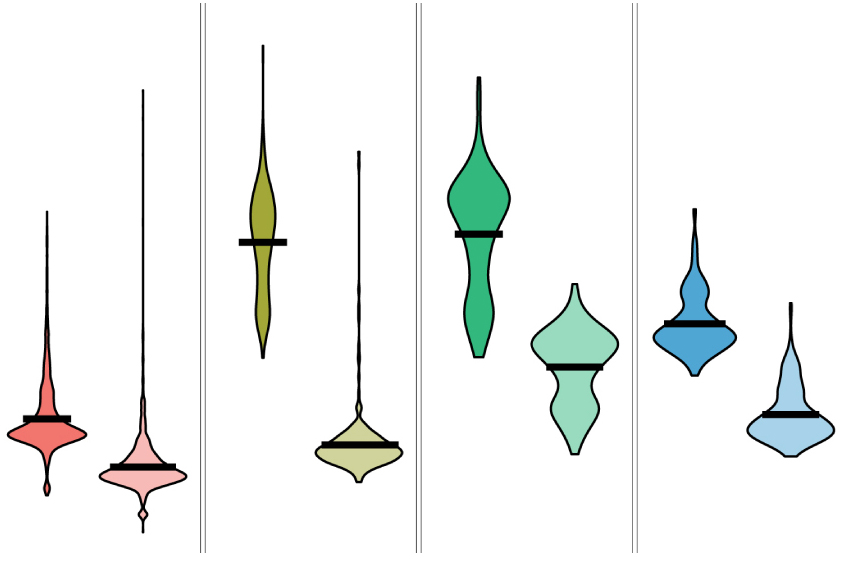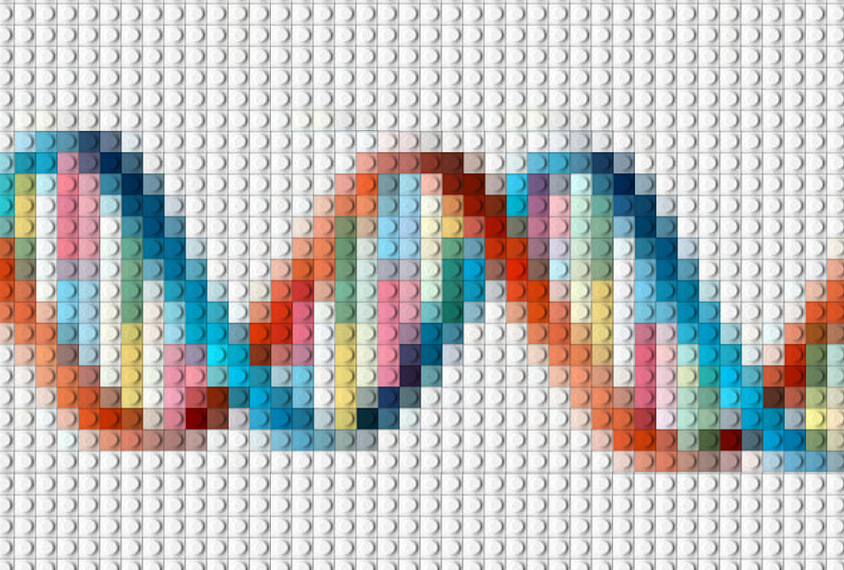Simplex families
Recent articles
Null and Noteworthy: Modified MRI; father findings
This month’s newsletter tackles null findings from an attempted replication of a “revolutionary” MRI approach and an analysis of family genetics.

Null and Noteworthy: Modified MRI; father findings
This month’s newsletter tackles null findings from an attempted replication of a “revolutionary” MRI approach and an analysis of family genetics.
Whole-genome trove ties new genes, variants to autism
A massive update to the MSSNG dataset gives qualified researchers ready access to explore autism’s genetic architecture on a cloud-based platform.

Whole-genome trove ties new genes, variants to autism
A massive update to the MSSNG dataset gives qualified researchers ready access to explore autism’s genetic architecture on a cloud-based platform.
X-chromosome variants help explain autism’s sex bias
The rare variants are also linked to ADHD and Tourette syndrome, two other conditions that disproportionately affect boys and men.

X-chromosome variants help explain autism’s sex bias
The rare variants are also linked to ADHD and Tourette syndrome, two other conditions that disproportionately affect boys and men.
Autism-linked genetic variants increase, decrease intelligence
Common and rare variants in or near autism-associated genes can have opposite effects on cognition.
Autism-linked genetic variants increase, decrease intelligence
Common and rare variants in or near autism-associated genes can have opposite effects on cognition.
Analysis ups estimate of spontaneous mutations’ role in autism
Spontaneous genetic mutations contribute to autism in 30 to 39 percent of all people with the condition, and 52 to 67 percent of autistic children whose siblings do not also have the condition.

Analysis ups estimate of spontaneous mutations’ role in autism
Spontaneous genetic mutations contribute to autism in 30 to 39 percent of all people with the condition, and 52 to 67 percent of autistic children whose siblings do not also have the condition.
Ultra-rare variants point to new autism candidate genes
A large, whole-genome sequencing study of families yields insights into ultra-rare genetic variants that contribute to autism.

Ultra-rare variants point to new autism candidate genes
A large, whole-genome sequencing study of families yields insights into ultra-rare genetic variants that contribute to autism.
Analysis links 98 genes to neurodevelopmental conditions
Genetic sequences from nearly 53,000 people with autism, developmental delay or intellectual disability reveal strong ties to 98 genes.

Analysis links 98 genes to neurodevelopmental conditions
Genetic sequences from nearly 53,000 people with autism, developmental delay or intellectual disability reveal strong ties to 98 genes.
Decade of data dents idea of a ‘female protective effect’
Brothers and sisters of people with autism are both about two to three times more likely than the general population to have an autistic child themselves.

Decade of data dents idea of a ‘female protective effect’
Brothers and sisters of people with autism are both about two to three times more likely than the general population to have an autistic child themselves.
Fever eases behavioral problems in some children with autism
About 17 percent of children with autism are calmer and more communicative than usual when they have a fever.

Fever eases behavioral problems in some children with autism
About 17 percent of children with autism are calmer and more communicative than usual when they have a fever.
Sizeable fraction of autism risk traced to ‘mosaic’ mutations
Mutations that appear in only some of the body’s cells contribute to autism in about 4 percent of people with the condition.

Sizeable fraction of autism risk traced to ‘mosaic’ mutations
Mutations that appear in only some of the body’s cells contribute to autism in about 4 percent of people with the condition.
Explore more from The Transmitter
Who funds your basic neuroscience research? Help The Transmitter compile a list of funding sources
We want to hear from you about the sources of funding for your research.
Who funds your basic neuroscience research? Help The Transmitter compile a list of funding sources
We want to hear from you about the sources of funding for your research.
The future of neuroscience research at U.S. minority-serving institutions is in danger
Cuts to federally funded programs present an existential crisis for the University of Puerto Rico’s rich neuroscience community and for research at minority-serving institutions everywhere.

The future of neuroscience research at U.S. minority-serving institutions is in danger
Cuts to federally funded programs present an existential crisis for the University of Puerto Rico’s rich neuroscience community and for research at minority-serving institutions everywhere.
Unexpected astrocyte gene flips image of brain’s ‘stalwart sentinels’
The genetic marker upends the accepted orientation of non-star-like astrocytes in the glia limitans superficialis.

Unexpected astrocyte gene flips image of brain’s ‘stalwart sentinels’
The genetic marker upends the accepted orientation of non-star-like astrocytes in the glia limitans superficialis.